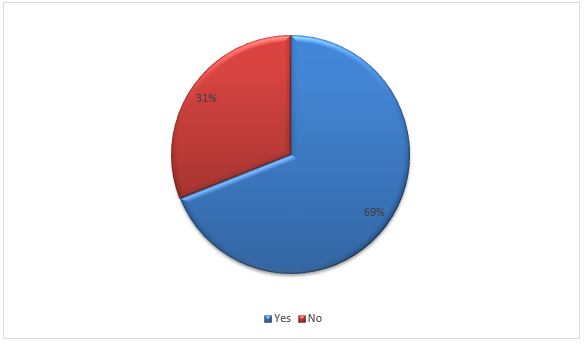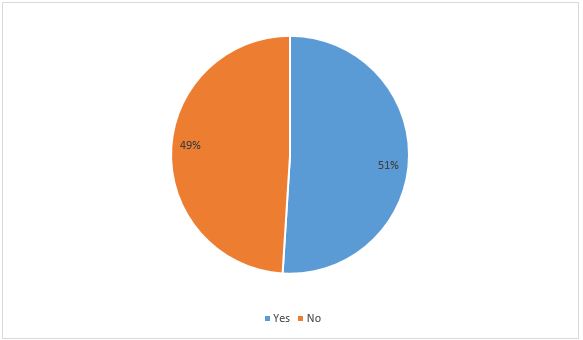Introduction
The core of the entire marketing philosophy is consumer behavior. In-depth consumer information is required for effective marketing operations and is the foundation for identifying the target market of complex marketing development. Understanding the reasons for potential customers and the capacity to professionally analyze consumers’ decision-making process to acquire goods and services are critical to the company’s successful strategic growth. It makes no sense to engage in advertising unless the aims and objectives of communication are precisely defined.
Going from “creative insight” in determining the qualities of communication is risky; following this logic of advertising strategy most frequently leads to enormous disappointments and financial losses and occasionally to the marketing and economic death of the product (Rodgers & Thorson, 2019). In communication, two universal strategic aims that characterize the vast majority of campaigns may be established.
It is hard to establish any attitude towards a product in the minds of consumers if they are unaware of it. Communication-induced awareness is an essential precursor for attitude. The capacity of a customer, a representative of the target population, to recognize (learn or remember) a brand in quantity, minimal, and sufficient to make a purchase is defined as awareness.
Creating attitude is advertising communication’s second general strategic purpose (Vaughn, 1986). Attitude is a considerably more sophisticated communication impact. In the new economy, any advertising influence is directly or indirectly directed at attitude creation. Identifying the motivations that drive people to consume and purchase Nescafe brand items will, therefore, aid in formulating the most successful advertising and overall brand development plan.
Discovery Task
Manufacturers’ interest in the psychology of customer behavior, their ways of evaluating goods, and selection procedures evolved in the United States and Western Europe amid the escalation of rivalry saturation of markets with comparable items owing to the extensive use of mass marketing. This situation prompted a demand for research in the field of consumer behavior to influence their behavior or, at the very least, take into account its peculiarities in their activities by understanding the external and internal factors that shape consumers’ behavioral responses, both individual and organizational.
Marketing’s evolution as a discipline and human activity has resulted in the birth of four methods of modeling consumer behavior: microeconomic, psychological, sociological, and integrated. The microeconomic method is founded on rationality, which defines the relationship between consumer demand and objective economic features such as the utility and price of commodities (Parker et al., 2018).
According to the microeconomic approach, consumers try to maximize their happiness while taking into account current monetary resource constraints and having appropriate information about other sources of the fulfillment of demands; their behavior is deemed reasonable (Kitchen et al., 2008). The psychological method of studying consumer behavior is founded on fundamental ideas such as cognitive theory and psychoanalytic theory of thought. According to the theory of cognition, knowledge plays a critical role in behavior: the consumer analyses what impacts him based on accessible experience and his goal attitudes.
There are two sorts of motivation: informational (negative) and transformative (positive). It should not be assumed that “negative” purchasing motivations refer to the consumer’s initial unfavorable attitude towards the purchase or the goods. Negative emotions can vary in severity (Jin et al., 2019). For example, a consumer may be bothered by the fact that his closet is out of style or that he is out of milk or bread at home. The subsequent emotional distress will lead the person to either the bakery or the outerwear store.
Discoveries
The Nescafe product is classified as a daily consumption item. Most individuals can quickly fulfill their fundamental necessities. Everyday things are readily available, and nearly everyone has the money to purchase them. Since the bottom level of Maslow’s hierarchy of requirements has long been met, customers progress to higher levels. At these higher levels, emotions and personal attributes take precedence.
Perceptions of well-being and self-actualization are much more nuanced and diverse nowadays (Stuhlfaut, 2011). People feel at ease wearing stylish clothes, driving a great automobile, or owning products by well-known designers. The simple act of purchasing a cup of coffee has evolved into an event that provides the buyer emotional and psychological fulfillment. Purchasing coffee has an almost medicinal effect.
The foundation of Nescafe Classic positioning is the notion that no matter what the consumer’s gender, age, where he lives, or what we do, everyone needs to wake up, cheer up, mobilize, and actively and positively begin some action. We defined the target demographic of Nescafe Classic as “drowsy doers” after studying the motivations for coffee intake.
For these folks, coffee is, first and foremost, a sign of the start: the start of the day, work, or any other energetic activity. They must understand that they have a coffee brand that, because of its outstanding product quality, allows them to have a “great start” every day. The target demographic of Nescafe Classic represents a distinct group within the Nescafe portfolio, which served as the foundation for developing a clearly targeted creative approach.
As a result, this product is purchased for everyday usage since the corporation generates a demand for it. The product is consumed at home after waking up, at work, in a café, or on the way to an important meeting. Consumers are motivated to buy this product because they are sure that after a cup of coffee, their day will be better, and they will feel more productive. Also, it is worth mentioning that the cans that hold coffee can be used by customers for different purposes. For example, after finishing their coffee, some people use the container to store dog food cereal, as a piggy bank, or as a container for candles (Nescafé Canada, 2023). This can provide a basis for creating an emphasis on improving packaging for better secondary consumption.
Implications
A survey that was conducted through a mailing list can help one get a better understanding of customer behavior. The survey and the charts with the identified responses are shown in Appendix A. Thanks to the results of the first survey, it can be understood that most people drink coffee in the morning, which supports the theory that the beverage helps people wake up.
The answer to the second question helps me discover that more than half of people feel tired without coffee. Also, the third question found that most people use coffee cans as storage containers for their belongings. The answers to the fourth question indicate that most people prefer to drink coffee in the company of someone, which will help create new advertising ideas. Finally, the fifth question’s answer helps establish customers’ satisfaction with Nescafe’s packaging. Thus, the findings help establish the weaknesses of the company’s advertising and identify possible ways of moving forward for the company’s development.
The discoveries made will provide a more in-depth understanding of buyer motivation. This is particularly necessary in today’s world, where competitiveness is essential to brands’ existence. Three main features can characterize the situation in the instant coffee market. First, instant coffee dominates the U.S. coffee market. This sphere is developing at a high rate and is characterized by significant investments in marketing and advertising.
The distinctive features of the agglomerated coffee segment are consumer accessibility, popularity, high profitability, and, consequently, fierce competition. The emergence of new aggressive coffee brands on the market significantly increased competition in the segment, which, together with the uncertainty in the positioning of Nescafe Classic in the mind of the consumer and its relationship with the umbrella brand Nescafe clearly indicated the need to develop a new brand promotion strategy.
Conclusion
Thus, studying consumer motivational psychology is crucial for advertising design to disclose people’s objectives and incentives to purchase or respond to advertising in a certain way. An advertiser must carefully consider the motivations that lead potential consumers to acquire his goods or services. Consumer research has taken the form of looking at the elements that naturally impact buying. The primary ones are the motivations that influence the choice to acquire specific things.
The study of customer motivations is the foundation for creating an effective advertising campaign. The program is seen to be more effective if it is coupled with people’s aspirations rather than attempting to change them. In the case of Nescafe, the findings indicating consumers regard the product as a symbol of the start of a good day will be emphasized. This will assist the company’s competitiveness and get more consumers.
References
Jin, H. S., Kerr, G., & Suh, J. (2019). Impairment effects of creative ads on brand recall for other ads. European Journal of Marketing, 53(7), 1466-1483. Web.
Kitchen, P. J., Kim, I., & Schultz, D. E. (2008). Integrated marketing communications: Practice leads theory. Journal of advertising research, 48(4), 531-546. Web.
Nescafé Canada. (2023). Nescafé Jars (EN 60s) [Video]. YouTube. Web.
Parker, J., Ang, L., & Koslow, S. (2018). The creative search for an insight in account planning: An absorptive capacity approach. Journal of Advertising, 47(3), 237-254. Web.
Rodgers, S., & Thorson, E. (2019). Advertising theory. Routledge.
Stuhlfaut, M. W. (2011). The creative code: An organisational influence on the creative process in advertising. International Journal of Advertising, 30(2), 283-304. Web.
Vaughn, R. (1986). How advertising works: A planning model revisited. Journal of advertising research, 26(1), 57-66. Web.
Appendix A





- Method used: survey.
- Sample: people who have recently purchased coffee from an online store.
- Results: the results suggest that people are most likely to drink coffee with friends or loved ones in the morning. Also, customers like Nescafe packaging and prefer to use coffee cans as containers. Coffee consumption makes customers feel productive and invigorated.